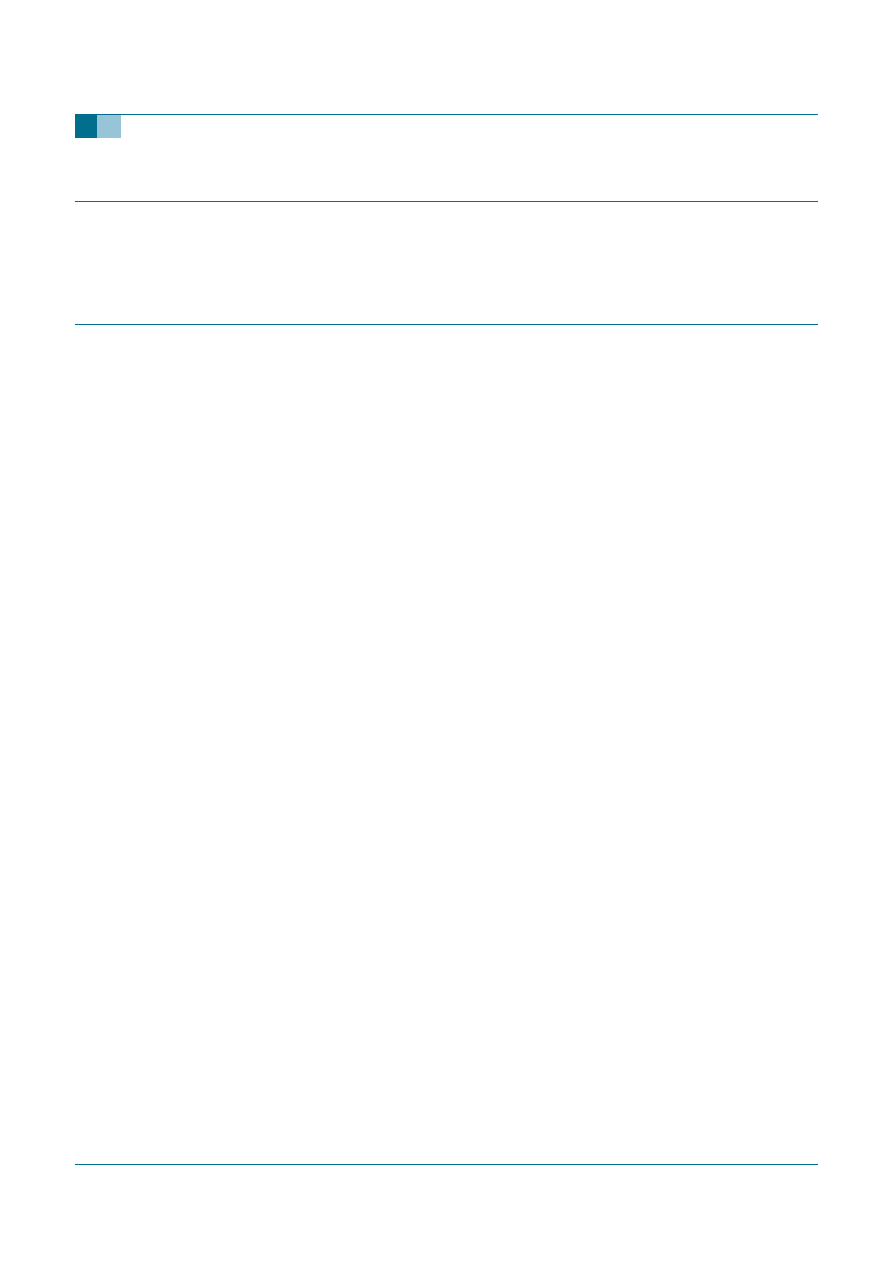- 您現(xiàn)在的位置:買賣IC網(wǎng) > PDF目錄98307 > TZA1047HL/M1B (NXP SEMICONDUCTORS) SPECIALTY CONSUMER CIRCUIT, PQFP64 PDF資料下載
參數(shù)資料
| 型號(hào): | TZA1047HL/M1B |
| 廠商: | NXP SEMICONDUCTORS |
| 元件分類: | 消費(fèi)家電 |
| 英文描述: | SPECIALTY CONSUMER CIRCUIT, PQFP64 |
| 封裝: | 10 X 10 MM, 1.4 MM HEIGHT, PLASTIC, MS-026, SOT314-2, LQFP-64 |
| 文件頁數(shù): | 61/69頁 |
| 文件大?。?/td> | 324K |
| 代理商: | TZA1047HL/M1B |
第1頁第2頁第3頁第4頁第5頁第6頁第7頁第8頁第9頁第10頁第11頁第12頁第13頁第14頁第15頁第16頁第17頁第18頁第19頁第20頁第21頁第22頁第23頁第24頁第25頁第26頁第27頁第28頁第29頁第30頁第31頁第32頁第33頁第34頁第35頁第36頁第37頁第38頁第39頁第40頁第41頁第42頁第43頁第44頁第45頁第46頁第47頁第48頁第49頁第50頁第51頁第52頁第53頁第54頁第55頁第56頁第57頁第58頁第59頁第60頁當(dāng)前第61頁第62頁第63頁第64頁第65頁第66頁第67頁第68頁第69頁

9397 750 14664
Koninklijke Philips Electronics N.V. 2005. All rights reserved.
Product data sheet
Rev. 02 — 1 June 2005
64 of 69
Philips Semiconductors
TZA1047
Preprocessor IC for CD and DVD rewritable
12. Packing information
When using reow soldering it is recommended that the Dry Packing instructions in the
Quality Reference Pocketbook are followed. The pocketbook can be ordered using the
code 9398 510 34011.
13. Soldering
13.1 Introduction to soldering surface mount packages
This text gives a very brief insight to a complex technology. A more in-depth account of
soldering ICs can be found in our
Data Handbook IC26; Integrated Circuit Packages
(document order number 9398 652 90011).
There is no soldering method that is ideal for all surface mount IC packages. Wave
soldering can still be used for certain surface mount ICs, but it is not suitable for ne pitch
SMDs. In these situations reow soldering is recommended.
13.2 Reow soldering
Reow soldering requires solder paste (a suspension of ne solder particles, ux and
binding agent) to be applied to the printed-circuit board by screen printing, stencilling or
pressure-syringe dispensing before package placement. Driven by legislation and
environmental forces the worldwide use of lead-free solder pastes is increasing.
Several methods exist for reowing; for example, convection or convection/infrared
heating in a conveyor type oven. Throughput times (preheating, soldering and cooling)
vary between 100 seconds and 200 seconds depending on heating method.
Typical reow peak temperatures range from 215
°Cto270 °C depending on solder paste
material. The top-surface temperature of the packages should preferably be kept:
below 225
°C (SnPb process) or below 245 °C (Pb-free process)
– for all BGA, HTSSON..T and SSOP..T packages
– for packages with a thickness
≥ 2.5 mm
– for packages with a thickness < 2.5 mm and a volume
≥ 350 mm3 so called
thick/large packages.
below 240
°C (SnPb process) or below 260 °C (Pb-free process) for packages with a
thickness < 2.5 mm and a volume < 350 mm3 so called small/thin packages.
Moisture sensitivity precautions, as indicated on packing, must be respected at all times.
13.3 Wave soldering
Conventional single wave soldering is not recommended for surface mount devices
(SMDs) or printed-circuit boards with a high component density, as solder bridging and
non-wetting can present major problems.
To overcome these problems the double-wave soldering method was specically
developed.
If wave soldering is used the following conditions must be observed for optimal results:
相關(guān)PDF資料 |
PDF描述 |
|---|---|
| TZA1047HL/M2 | SPECIALTY CONSUMER CIRCUIT, PQFP64 |
| TZA1047HL/M3 | SPECIALTY CONSUMER CIRCUIT, PQFP64 |
| TZA1049TH | SPECIALTY CONSUMER CIRCUIT, PDSO28 |
| 1N5376ATR | TRANS PNP HV -300V -500MA TO-92 |
| 1N5376BTR | TRANS PNP HV -200V -1000MA TO-92 |
相關(guān)代理商/技術(shù)參數(shù) |
參數(shù)描述 |
|---|---|
| TZA1048 | 制造商:PHILIPS 制造商全稱:NXP Semiconductors 功能描述:4-channel BTL driver for CD/DVD drives |
| TZA1048TH | 制造商:PHILIPS 制造商全稱:NXP Semiconductors 功能描述:4-channel BTL driver for CD/DVD drives |
| TZA10-5 | 制造商:RHOMBUS-IND 制造商全稱:Rhombus Industries Inc. 功能描述:TZA / TYA Series 5-Tap High Performance Passive Delay Modules |
| TZA10-7 | 制造商:RHOMBUS-IND 制造商全稱:Rhombus Industries Inc. 功能描述:TZA / TYA Series 5-Tap High Performance Passive Delay Modules |
| TZA1-10 | 制造商:RHOMBUS-IND 制造商全稱:Rhombus Industries Inc. 功能描述:TZA / TYA Series 5-Tap High Performance Passive Delay Modules |
發(fā)布緊急采購,3分鐘左右您將得到回復(fù)。